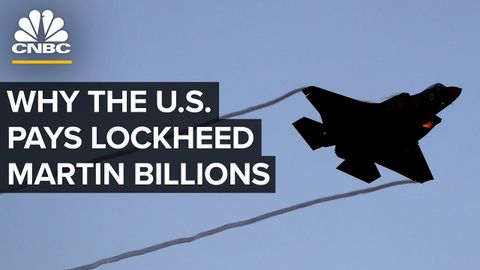美国政府为何向洛克希德马丁公司支付数十亿美元(Why The U.S. Government Pays Lockheed Martin Billions)
joey joey 發佈於 2021 年 05 月 16 日  沒有此條件下的單字
沒有此條件下的單字US /trɪˈmɛndəs/
・
UK /trəˈmendəs/
- v.i.趨向
- v.t.照料;照顧
- v.t./i.傾向;趨向
US /ˈrevənju/
・
UK /'revənju:/
- n. (c./u.)收益;稅收;收入;稅務局;營業收入
US /pəˈzɪʃən/
・
UK /pəˈzɪʃn/
- n. (c./u.)態度,觀點;位置;(團隊運動中個人所處的)位置;職位;處境;優勢
- v.t.定位;放置

